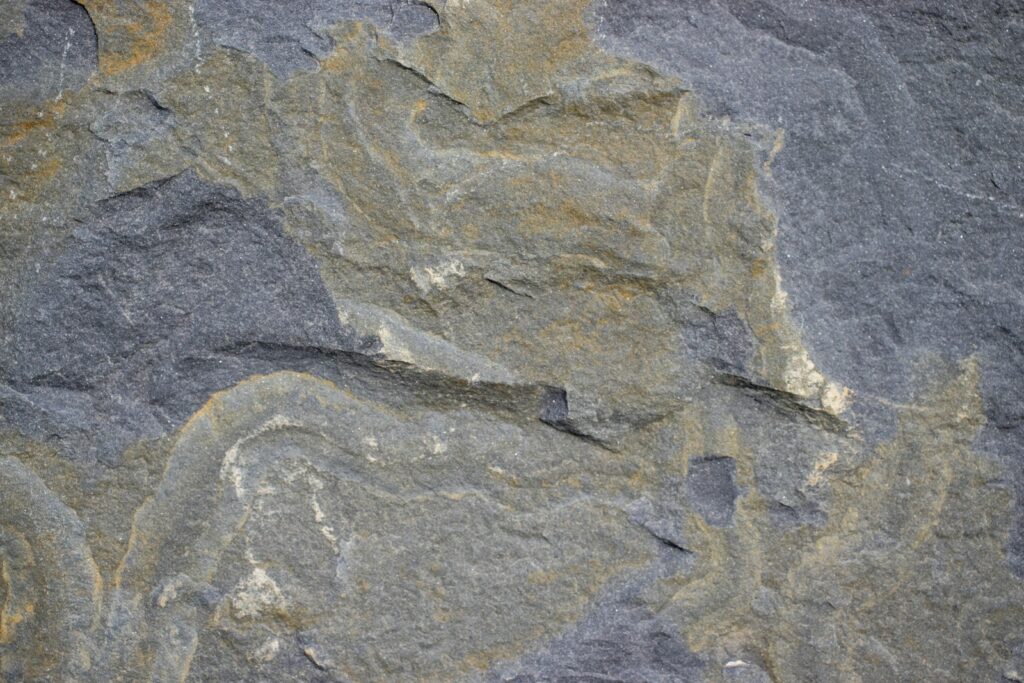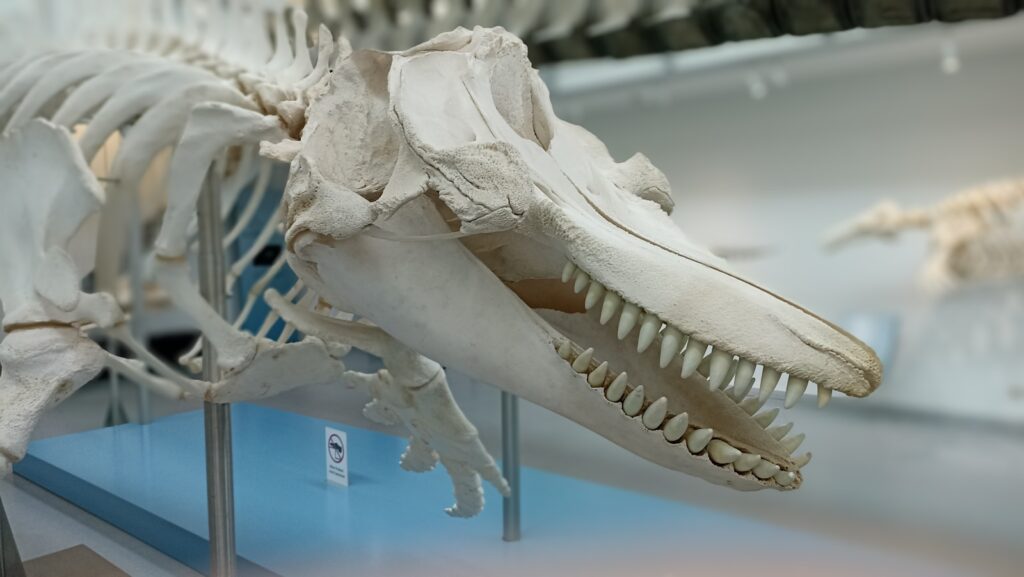When we think of enormous land mammals, elephants typically come to mind as the living giants of our world. However, these magnificent creatures had a prehistoric relative that dwarfed them in size and stature – Paraceratherium, formerly known as Indricotherium or Baluchitherium. This colossal mammal holds the distinction of being the largest land mammal ever to walk the Earth, surpassing even the mighty woolly mammoth and modern elephants. Living approximately 34 to 23 million years ago during the Oligocene epoch, this giant has fascinated paleontologists and captured the public imagination since its discovery in the early 20th century.
The Discovery and Naming Controversy

Image by Glen Carrie, via Unsplash
The story of Paraceratherium’s discovery is marked by scientific rivalry and naming disputes that persisted for decades. The first remains were unearthed in Balochistan (now part of Pakistan) in 1908 by Sir Clive Forster Cooper, who named his find Baluchitherium. Shortly after, American paleontologist Henry Fairfield Osborn discovered similar fossils in Mongolia and named them Indricotherium. Meanwhile, Soviet paleontologists found specimens in Kazakhstan they called Paraceratherium. For years, these were considered different genera until further research in the 1980s determined they were likely the same animal.
Today, Paraceratherium is generally accepted as the proper name due to the rules of scientific nomenclature, though you’ll still find references to all three names in scientific literature and popular media. This naming controversy reflects the fractured nature of early 20th-century paleontological research when communication between Western and Soviet scientists was limited by political tensions.
A True Rhinoceros Relative, Not an Elephant

Image by Pauline Bernfeld, via Unsplash
Despite often being compared to elephants due to its massive size, Paraceratherium was actually part of the Rhinocerotoidea superfamily, making it a distant cousin to modern rhinoceroses rather than elephants. Unlike today’s rhinos, however, Paraceratherium had no horn and possessed a body structure optimized for browsing tall vegetation. Its skull was relatively small compared to its body but elongated to support a prehensile upper lip or short trunk used for grasping branches high above the ground.
The dental arrangement consisted of specialized chisel-like incisors and high-crowned molars perfectly adapted for stripping and grinding tough plant material. Evolutionary biologists find this creature particularly fascinating as it represents a separate evolutionary path for rhino relatives that developed gigantism independently from the elephant family, demonstrating convergent evolution in some aspects while maintaining distinct anatomical features that clearly identify its rhinoceros lineage.
Astonishing Size and Proportions

Image by Julie Wolpers, via Unsplash
The dimensions of Paraceratherium challenge our perception of how large land mammals can grow. Standing at approximately 5.5 meters (18 feet) tall at the shoulder—roughly the height of a two-story building—this colossus towered over all other land mammals, past or present. Its estimated weight ranged from 15 to 20 tons, making it at least twice as heavy as the largest modern elephants and comparable to some medium-sized dinosaurs. From nose to tail, Paraceratherium stretched 8 to 9 meters (26 to 30 feet) in length.
The neck alone was remarkably elongated, accounting for nearly a quarter of the animal’s total length, an adaptation that allowed it to reach foliage up to 8 meters high without rearing up. Its legs were proportionally longer and more pillar-like than those of modern elephants or rhinos, necessary to support its tremendous weight while maintaining mobility across the vast grasslands and woodlands of central Asia.
Habitat and Geographic Range

Image by Fabrizio Frigeni, via Unsplash
Paraceratherium roamed across a vast swath of what is now Asia, with fossil remains discovered in modern-day China, Mongolia, Kazakhstan, Pakistan, and India. During the Oligocene epoch, these regions presented a different landscape than today—more forested with woodlands and savanna-like environments rather than the deserts and mountains that now characterize much of central Asia. The distribution of fossils suggests these giants preferred lowland areas with mixed woodland habitats, where their height gave them access to food sources unavailable to other herbivores.
Paleoclimatic studies indicate that the climate in these regions during Paraceratherium’s time was generally warmer and more humid than present day, supporting greater forest cover and vegetation density. The wide geographic distribution of Paraceratherium fossils reveals that they were highly successful animals that adapted to various environments across Asia before their eventual extinction as climates changed and forests receded.
Dietary Habits of a Giant Browser

As a colossal herbivore, Paraceratherium required enormous quantities of plant material to sustain its massive body, estimated at several hundred kilograms of vegetation daily. Analysis of tooth wear patterns and jaw structure indicates that these giants were primarily browsers, feeding on leaves, soft twigs, and fruits from trees and tall shrubs.
Their extreme height gave them a significant advantage, allowing access to food sources 5-8 meters above the ground that remained untouched by other herbivores, essentially creating their own feeding niche with minimal competition. The elongated skull and dental adaptations suggest they may have used a prehensile upper lip to strip leaves from branches efficiently.
Isotopic analyses of fossil teeth have provided further insights, suggesting a diet consisting mainly of C3 plants—those typically found in more forested environments rather than open grasslands. This specialized feeding strategy, combined with their massive size, would have required them to constantly move through their habitat in search of sufficient food, potentially covering large territories in their daily feeding activities.
Locomotion and Movement Patterns

Moving such an enormous body efficiently presented unique challenges that shaped Paraceratherium’s anatomy. Unlike elephants with their columnar legs positioned directly under the body, Paraceratherium had slightly more mobile limbs with a hint of the rhinoceros’ posture, though modified for its massive weight. Fossil trackways suggest these animals moved with a steady, unhurried pace approximately 20-25 kilometers per day, covering substantial ground in search of food.
Biomechanical studies indicate they likely moved with a walking gait similar to modern rhinos but adapted for greater efficiency over long distances. Their feet were surprisingly compact relative to their size, with three toes on each foot ending in small hooves, unlike the pad-like feet of elephants. This configuration distributed their enormous weight while providing stability on varied terrain.
Calculations suggest that despite their enormous size, these animals could probably move at speeds up to 25 km/h (15 mph) for short bursts if threatened, though sustained running would have been metabolically costly and mechanically stressful for such a large-bodied animal.
Reproductive Biology and Life History

Image by Patrick Konior, via Unsplash
The reproductive strategies of Paraceratherium remain somewhat speculative as soft tissues don’t fossilize, but reasonable inferences can be made based on their modern relatives and scaling patterns in mammals. Given their enormous size, females likely had extremely long gestation periods, possibly lasting 18-24 months—significantly longer than the 15-16 month pregnancy of modern elephants. Calves would have been proportionally large at birth, perhaps weighing 250-300 kilograms (550-660 pounds), yet still helpless and requiring extended parental care. Growth to adult size probably took 10-12 years, with complete skeletal maturity potentially not occurring until 15-20 years of age.
Like modern megaherbivores, Paraceratherium likely had low reproductive rates, with females perhaps producing a single calf only every 3-5 years. Their total lifespan might have extended to 60-80 years, comparable to elephants. This slow reproductive strategy would have made their populations particularly vulnerable to environmental changes or increased predation pressure, potentially contributing to their eventual extinction when conditions in Asia began to shift at the end of the Oligocene.
Social Structure and Behavior

Behavioral aspects of extinct animals are challenging to determine definitively, but several lines of evidence suggest possibilities about Paraceratherium’s social structure. Based on modern megaherbivores like rhinoceroses and elephants, paleobiologists hypothesize that these giants likely lived in loose associations rather than tight-knit herds.
Adult males may have been solitary for much of the year, coming together with females only during breeding seasons. Younger animals and females with calves potentially formed small family groups for protection and cooperative care of offspring. Fossil sites where multiple individuals have been found together hint at possible congregations around water sources or particularly rich feeding grounds.
The relative brain size of Paraceratherium, determined from cranial capacity measurements, suggests intelligence comparable to modern rhinoceroses—sufficient for complex social interactions, long-term memory of resource locations, and sophisticated maternal care behaviors. Given their massive size, adults were presumably safe from predation, meaning their social structures would have evolved primarily around reproductive strategies and resource acquisition rather than defense.
Natural Predators and Threats

Adult Paraceratherium, with their towering height and immense bulk, existed virtually free from predation pressure—a phenomenon ecologists call “predator release” that often contributes to the evolution of gigantism. Even the largest carnivores of the Oligocene period, including Hyaenodon and early bear-dogs like Amphicyon, would have been unable to take down a healthy adult.
However, the young would have been vulnerable, particularly newborns and juveniles separated from maternal protection. Fossil evidence from the same deposits as Paraceratherium reveals several large carnivores that could have targeted these younger individuals, creating selection pressure for rapid growth and maternal vigilance. Beyond predation, these giants faced threats from environmental challenges, including seasonal droughts, wildfires, and habitat changes. Their enormous food and water requirements would have made them particularly sensitive to resource fluctuations.
Additionally, parasites and diseases likely posed significant threats, as they do for modern megaherbivores, potentially causing population declines during periods of environmental stress when immunity might be compromised by nutritional deficiencies.
Evolutionary Success and Adaptation

Paraceratherium’s evolutionary journey represents one of the most successful examples of megafaunal adaptation in mammalian history. Their lineage emerged from smaller rhinoceros-like ancestors during the Eocene epoch, gradually increasing in size over millions of years until reaching their colossal proportions in the early Oligocene. This dramatic size increase followed a pattern paleontologists call “Cope’s Rule”—the tendency for animal lineages to evolve larger body sizes over time.
For Paraceratherium, gigantism conferred several evolutionary advantages: access to abundant food sources high in the forest canopy, reduced competition for resources, increased metabolic efficiency, enhanced ability to store fat reserves during seasonal shortages, and virtual immunity from predation as adults. Their dental and digestive adaptations allowed efficient processing of fibrous plant material, while their elongated limbs and neck perfectly suited their browsing lifestyle.
The group maintained their ecological dominance across Asia for approximately 11 million years, an impressive tenure that demonstrates the effectiveness of their adaptive strategy in the ecosystems of the time. Their success was so pronounced that no other mammalian herbivore approached their size niche while they existed.
Extinction Theories and Environmental Change

The disappearance of Paraceratherium from the fossil record around 23 million years ago coincides with significant global climate changes marking the transition from the Oligocene to the Miocene epoch. The most compelling extinction theory centers on habitat transformation across their Asian range. As global temperatures cooled and rainfall patterns shifted, the mixed woodlands and forest-savanna mosaics that had supported these browsers began transitioning to more open grasslands and steppes.
This fundamental ecosystem change would have drastically reduced the tall vegetation these specialized browsers depended upon. Additionally, the formation of the Tibetan Plateau following the collision of the Indian subcontinent with Asia altered regional weather patterns, creating more arid conditions across central Asia. Some researchers also point to competition from emerging proboscideans (early elephants) that were expanding into Asia around this time, though the timing suggests habitat change was the primary driver.
The specialized adaptations that had made Paraceratherium so successful—their extreme height, specialized browsing diet, and massive size—paradoxically became liabilities when their preferred habitat began disappearing, demonstrating how even the most dominant species can succumb to environmental change.
Modern Scientific Research and New Discoveries

Research on Paraceratherium continues to evolve with new fossil discoveries and analytical techniques providing fresh insights into these ancient giants. In 2021, paleontologists working in China’s Linxia Basin announced the discovery of a remarkably complete skull that has refined our understanding of the animal’s appearance and taxonomy.
Advanced CT scanning technology has allowed researchers to examine the internal structure of fossil bones, revealing growth patterns and helping estimate more accurate body masses. Stable isotope analyses of tooth enamel have provided detailed information about their diet and habitat preferences, confirming their browsing lifestyle and forest habitat requirements. Comparative biomechanical studies using computer modeling have enhanced our understanding of how these enormous animals moved and supported their weight.
Paleogenetics has also made contributions, with researchers extracting collagen protein sequences from fossilized remains that help clarify Paraceratherium’s relationship to other rhinoceros lineages. The application of ancient DNA techniques, though challenging with fossils of this age, holds promise for future research that might reveal genetic adaptations that enabled their enormous size and specialized lifestyle.
Cultural Impact and Public Fascination

Since its discovery in the early 20th century, Paraceratherium has captured public imagination as an icon of prehistoric megafauna. Its immense size makes it a staple in natural history museum displays, where full-sized reconstructions draw crowds and offer perspective on mammalian gigantism. The animal has featured prominently in popular science literature, including books like “The Largest Land Mammal” by Donald Prothero and “Giant Mammals of the Cenozoic” by Christine Janis.
In visual media, Paraceratherium has appeared in documentaries such as BBC’s “Walking with Beasts,” where computer graphics brought these animals to life for millions of viewers. The creature has also penetrated popular culture, appearing in video games like “Ark: Survival Evolved” and inspiring fictional megafauna in fantasy literature. Beyond entertainment, Paraceratherium serves an important educational role, helping explain concepts like evolution, adaptation, and extinction to the public.
For many paleontologists, the first encounter with images or models of this colossal mammal sparked lifelong scientific careers, demonstrating how these ancient giants continue to inspire new generations of researchers to explore Earth’s biological past.
Conclusion

Paraceratherium stands as a testament to the remarkable diversity of mammalian evolution and the incredible adaptability of life on Earth. As the largest land mammal to ever walk our planet, it represents a fascinating evolutionary experiment in gigantism that succeeded for millions of years before environmental changes ultimately led to its extinction.
The story of this colossal rhinoceros relative offers important insights into how climate shapes ecosystems and how specialization can be both an evolutionary advantage and ultimately a vulnerability when environments change. Through continued research and new discoveries, our understanding of these magnificent creatures continues to evolve, helping us piece together the complex history of life on Earth and perhaps offering lessons about adaptation and resilience that remain relevant today.




